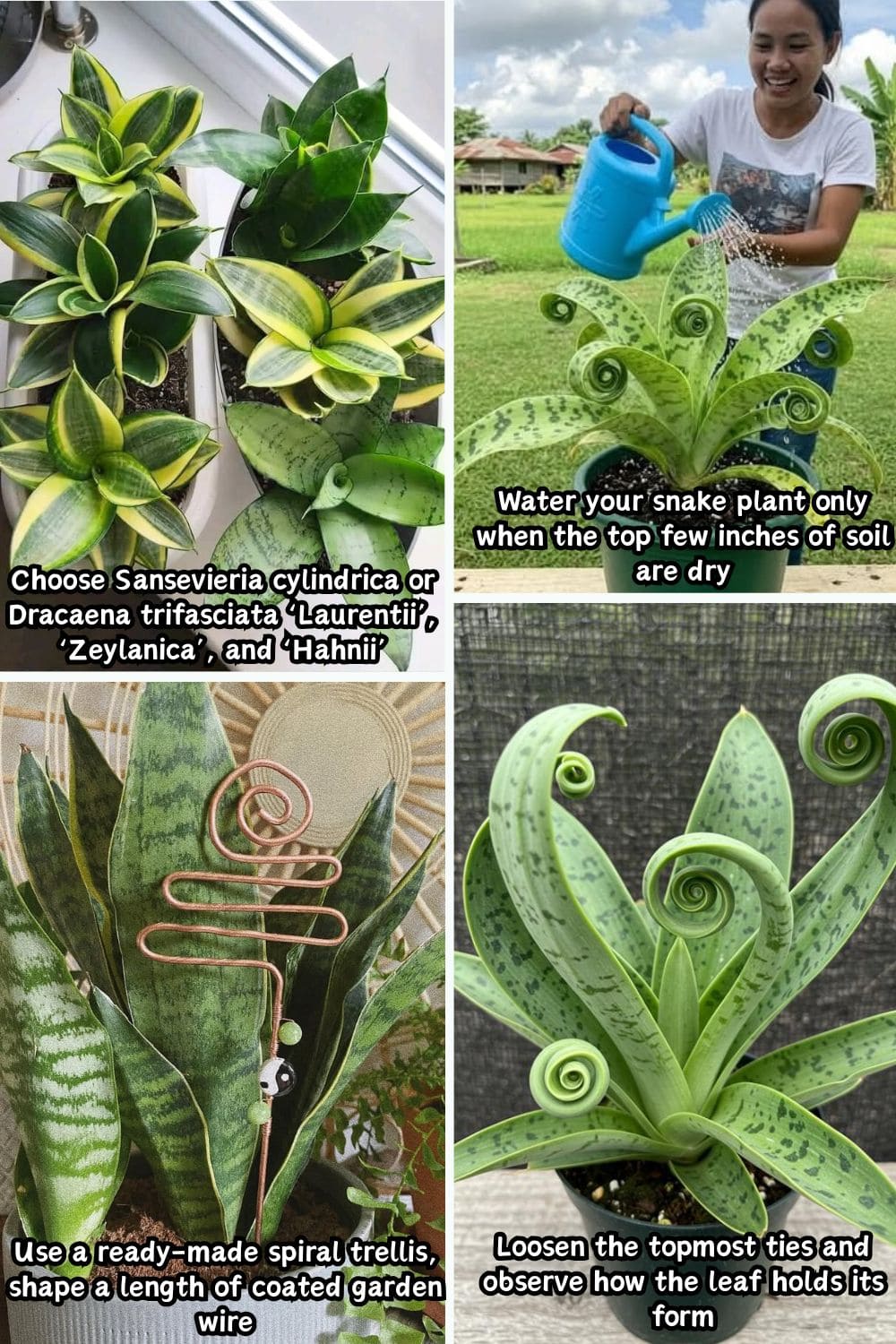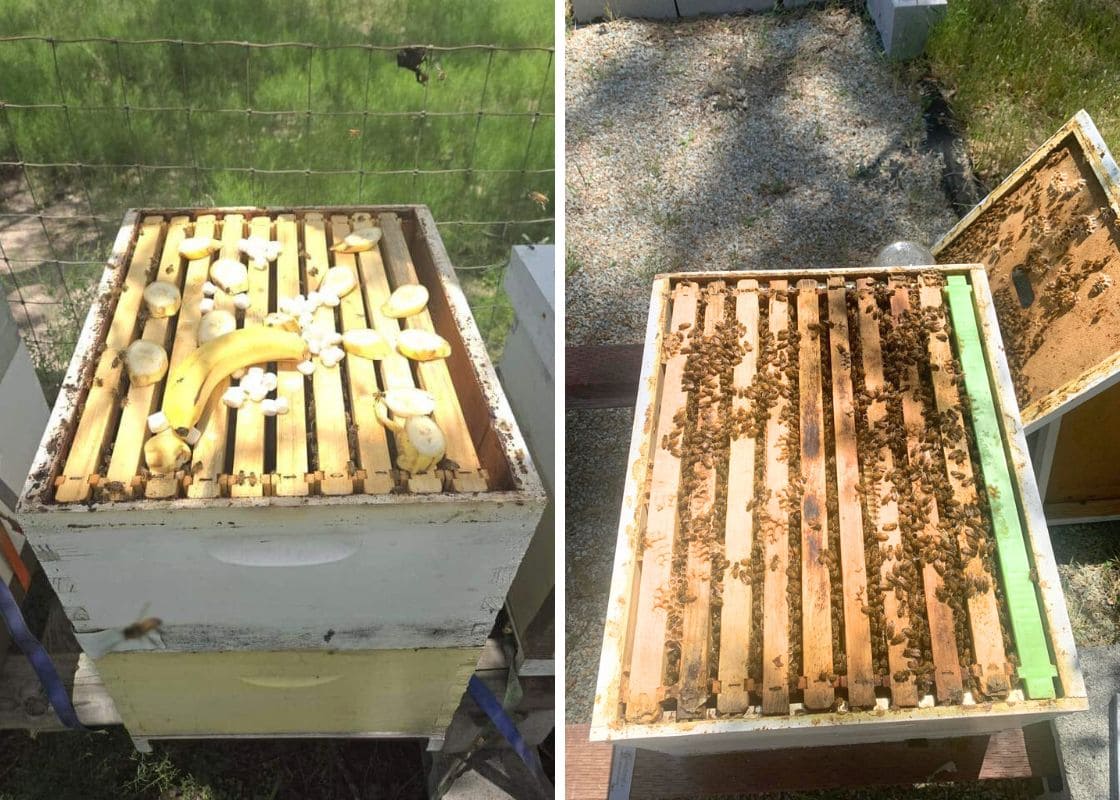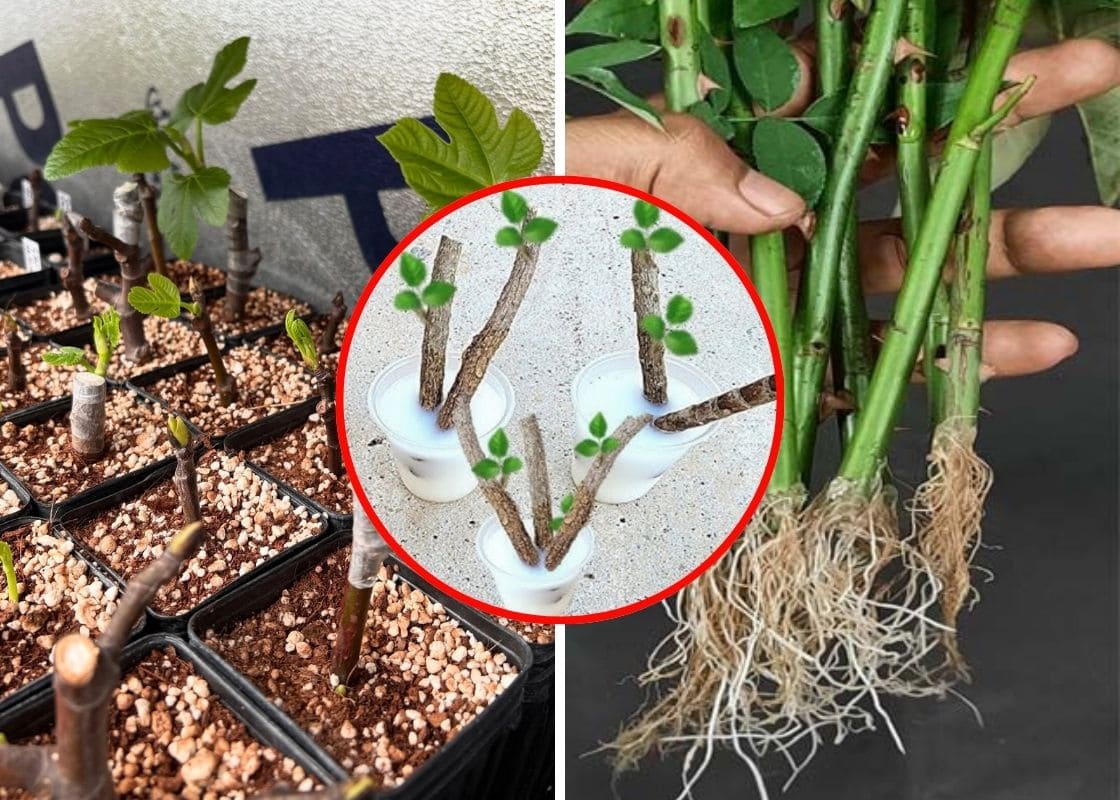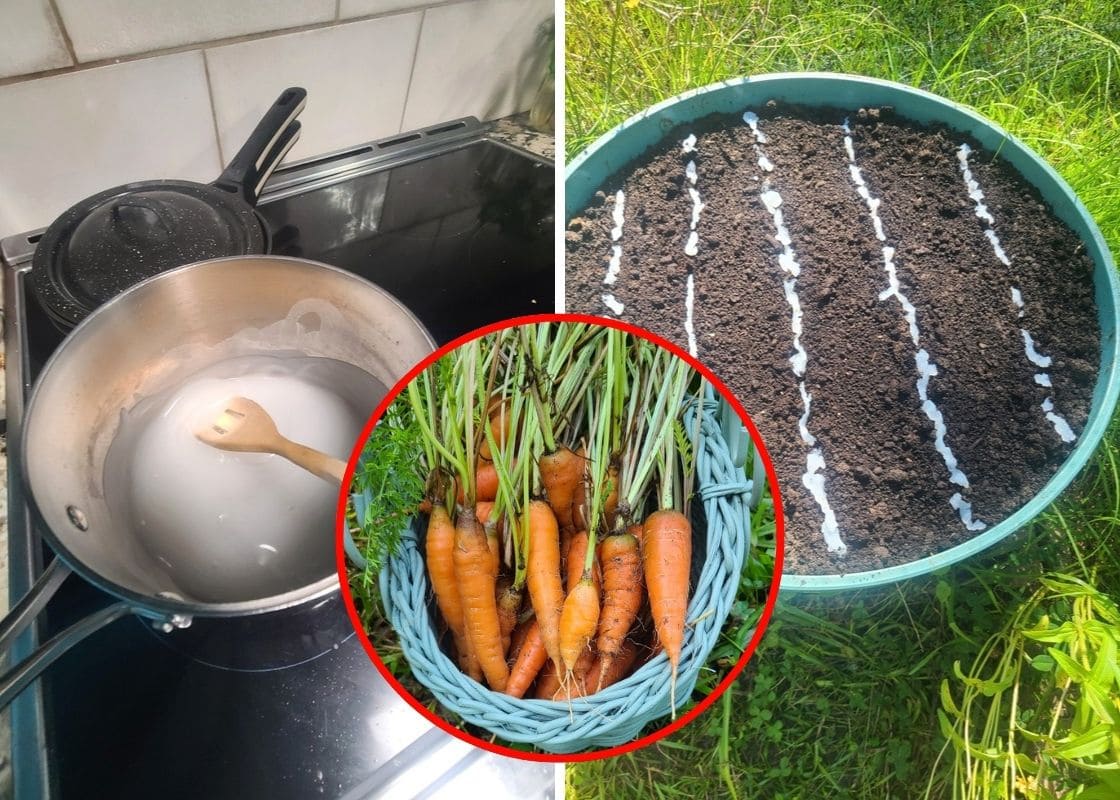Snake plants are often admired for their tall, sword-like leaves and elegant simplicity. But if you’ve ever come across one with twisting, spiraled foliage, you might have paused in wonder.
It looks like something nature couldn’t possibly have done alone. But with the right approach, you can train your snake plant to grow in a spiral or circular shape.
This isn’t about forcing your plant into submission. It’s about working with its natural tendencies and guiding its growth over time.
Step 1: Choose the Right Snake Plant to Start

You’ll want to start with a young plant, preferably one with pliable, fresh growth as mature leaves tend to be rigid and can crack if bent.
While most people associate spiraling with Sansevieria cylindrica due to its tubular leaves, other flexible varieties like Dracaena trifasciata ‘Laurentii’, ‘Zeylanica’, and the compact rosette-shaped ‘Hahnii’ can work just as well, especially when they’re still developing.
What you’re looking for is symmetry and structure. A plant with compact, centered growth will give you a balanced base to begin shaping.
You also need to avoid lanky, floppy specimens. They may look dramatic, but they’re harder to guide into a neat spiral.
Step 2: Create a Support System to Guide the Shape
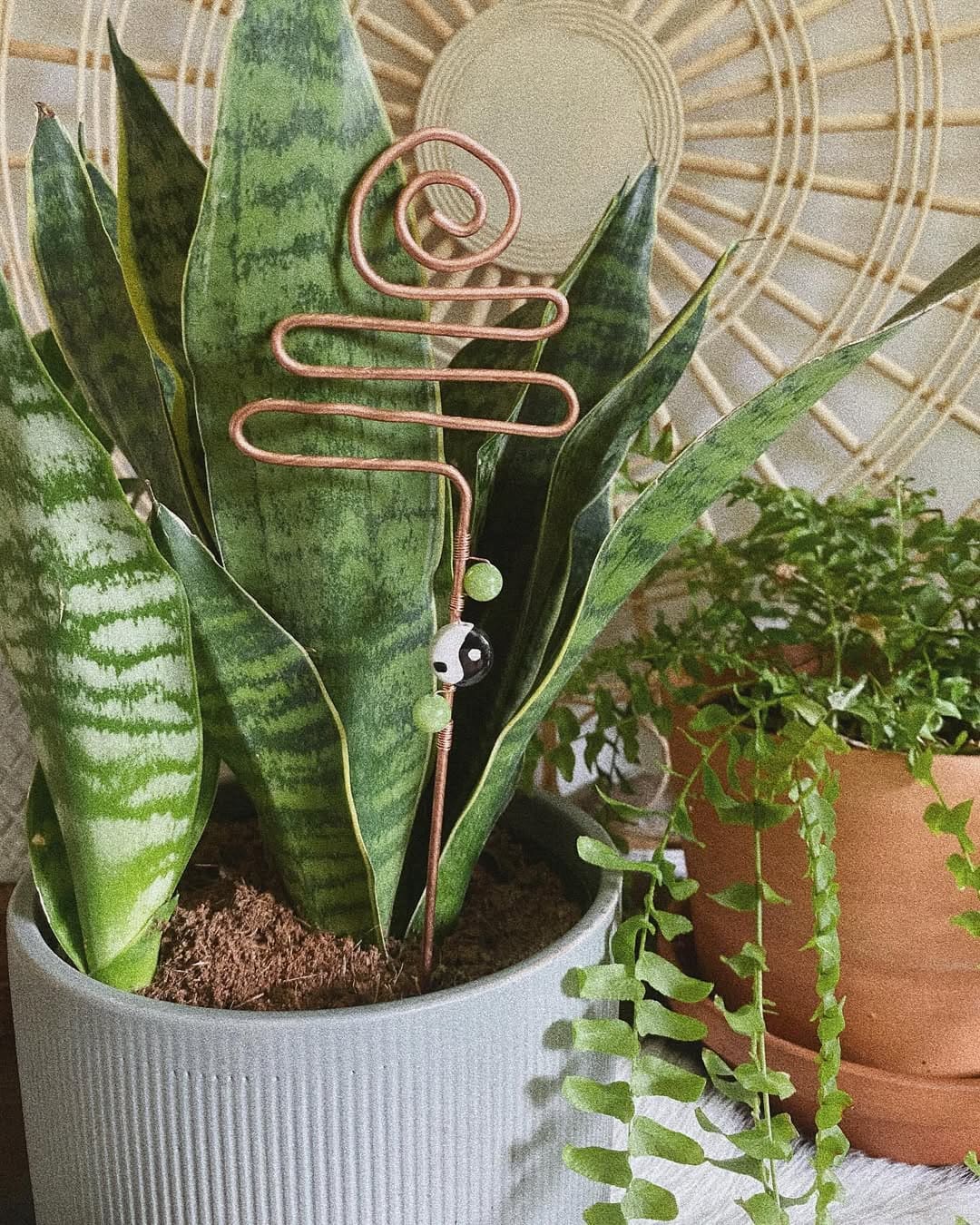
You can use a ready-made spiral trellis, shape a length of coated garden wire, or even repurpose a tomato cage with a little creativity.
Just make sure the material is sturdy enough to support vertical growth and flexible enough to be adjusted over time.
Gently press the base of your spiral or circular frame into the potting soil, being careful not to damage the roots.
Next, position it close to the plant’s center so the leaves can be gradually guided around it. The frame should feel snug, but not pressed against the leaves as it’s there to assist, not constrain.
Step 3: Begin Shaping the Leaves
Start with the longest and most flexible leaves, and gently curve them around your chosen shape.
You secure them in place using soft plant ties, like Velcro strips, foam-coated wire, or strips of cloth. And avoid anything too tight or abrasive, as it can cut into the leaves as they grow.
Don’t try to achieve the perfect spiral in one go. Snake plant leaves respond better to gentle redirection over time than to sudden bending.
You should attach your ties at multiple points on each leaf to support the curve evenly. Over the next few months, you’ll continue shaping new leaves as they appear, repeating the same process.
Step 4: Encourage Balanced Growth of Snake Plants

Once your plant is set up in its new shape, place it in a spot with bright, indirect sunlight, and rotate the pot weekly to prevent the leaves from leaning toward the light.
Uneven exposure can distort the spiral you’re trying to build.
If your home tends to be dry, give your plant a light misting in the mornings. Keeping the leaves hydrated makes them a bit more flexible during the training process.
Plus, snake plants are notoriously slow growers, especially indoors. You may not see noticeable change for weeks, or even months but the progress is happening.
Over time, the leaves will set into their new shape, and the spiral will become more defined.
Step 5: Don’t Neglect Everyday Plant Care
While you’re shaping your snake plant into a showpiece, don’t forget to stick to the basics. Healthy plants shape better and are less likely to droop, snap, or lose color.
Water your snake plant only when the top few inches of soil are dry. In most indoor settings, that means every two to four weeks.
You need to use a fast-draining succulent or cactus mix to avoid soggy roots, and always choose a pot with drainage holes.
During the active growing season, typically spring and summer, you can give the plant a monthly feeding with a balanced liquid fertilizer diluted to half strength.
That little nutritional boost will help support strong, flexible leaf development, which is essential for shaping.
Also, avoid overwatering at all costs; it weakens the plant’s structure and increases the chance of rot, especially in tightly bound pots.
Read more: 15 Must-Know Things For Snake Plant Owners
Step 6: Removing the Support (When the Time Is Right)
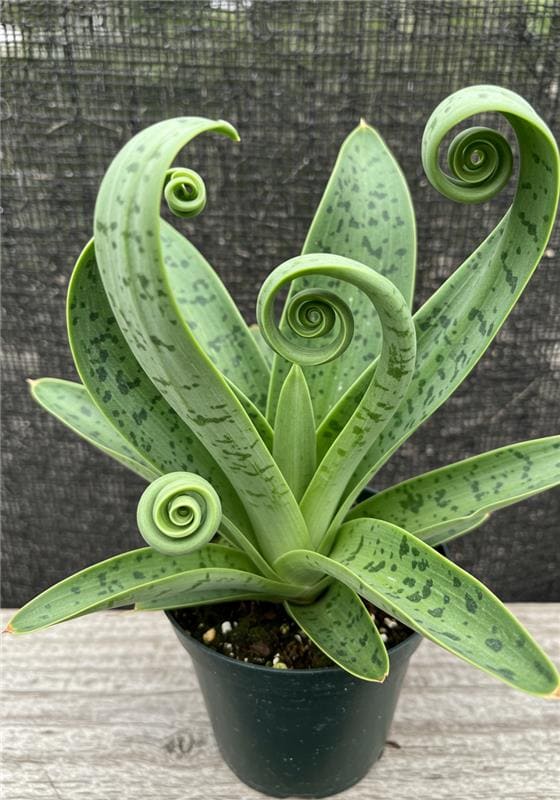
Eventually, your plant will begin to hold its shape without needing support. This is when you can start gradually removing the ties and spiral frame but do it in stages.
You begin by loosening the topmost ties and observe how the leaf holds its form. If it remains steady, remove a few more.
Don’t rush this step. If the plant isn’t ready, the leaves may shift or collapse back to their natural posture. It’s better to wait a few extra weeks than to undo all the shaping you’ve invested months into.
And here’s a pleasant surprise: once your plant becomes established in its spiral form, any new pups it produces often follow the same shape.
You might end up with an entire family of curling, spiraling snake plants, all grown from your original creation.
See also: How to Force a Snake Plant to Produce Pups for Unlimited Babies
